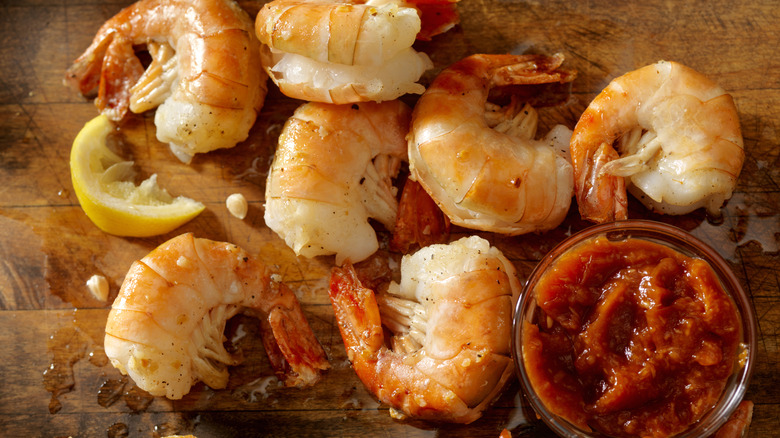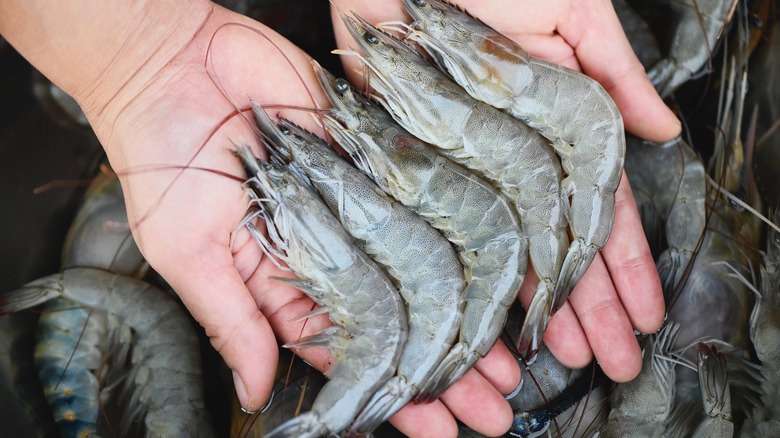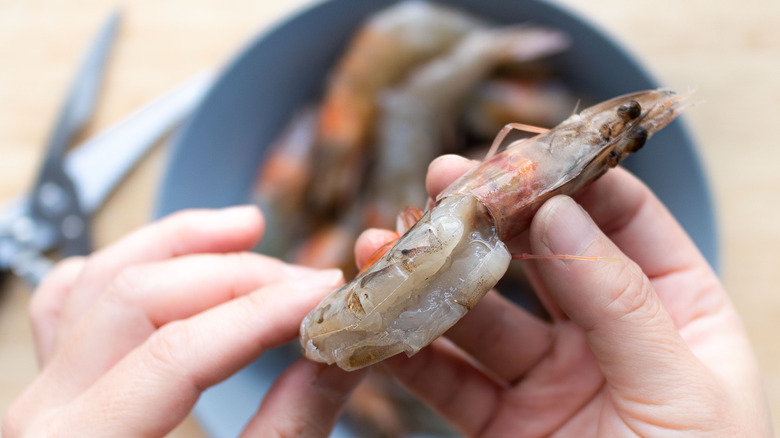Why It's Never Worth It To Buy Pre-Cleaned Shrimp
There are few things as time-consuming as preparing shell-on shrimp in the kitchen. While these small crustaceans pack in a lot of flavor and make for a range of great quick meals, the process of deveining, removing their shells, and optionally taking out their digestive tract can waste precious minutes in the kitchen.
Shrimp manufacturers are aware of this headache, and in an effort to remedy this problem and bring in more sales, they sell pre-cleaned, de-shelled shrimp at most grocery stores. But, while these so-called EZ variants might seem like the panacea to most home cooks, you still may ultimately want to buy whole shrimp for many reasons.
Because pre-cleaned shrimp are oftentimes cut by inaccurate machines during processing, these crustaceans lose a considerable amount of flesh before packaging. Combined with the labor cost of cleaning, you end up paying more money for less yield. You also have no say in how large the gash on their backs are, giving you less control over the visual component of your dish, which may matter to you based on your recipe.
Shell-on shrimp pack in more flavor than their EZ counterparts
Price isn't the only thing that makes shell-on shrimp better than pre-cleaned options. The shells of these crustaceans are actually edible and full of delicious flavors that can be infused into most dishes. In fact, studies have shown that many of the byproducts of shrimp, such as their heads or shells, can give your foods extra aromatics, proteins, and nutrients that may act as antioxidants in the body.
These bits can be grilled or fried into crispy perfection, or used to enhance the flavor of broths. You can also use these leftovers to fortify a mean seasoned shrimp cocktail, or even freeze them for future use.
Don't fret if you don't want to have shells present in your meal; cleaning shrimp can actually be quite effortless. Their heads and feet can just be twisted off, and you can quickly pry off their shell once you make an incision along their body. Just remember to defrost these critters and use a paring knife to make the process considerably easier.
Deveining shrimp is a lot easier than it looks
Contrary to popular belief, you can actually eat the digestive tract found in a shrimp's back. However, they can taste muddy or even have sand in them, making them less than ideal in most cooking scenarios. You can certainly leave your shrimp veined to save time in the kitchen, but removing this sometimes unsavory part really only takes a few minutes out of your day.
When deveining shrimp, run a knife carefully down their spine to get to the digestive tract. This task becomes exponentially easier if you've already taken the time to remove the shrimp's head and shell, which can get in the way of your cutting tool.
Once you're able to see the shrimp vein, you should be able to fish it out with your finger or wash it off under running water. If you're not entirely comfortable with your knife skills, a manual shrimp deveiner can also do the job, but keep in mind that some of these tools will automatically leave your shrimp butterflied.



